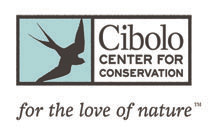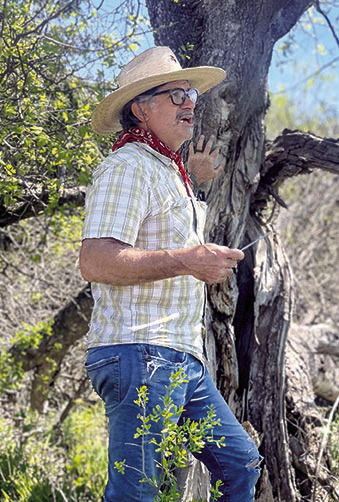AT THE TRAIL
DAVID TOUCHON
LAND MANAGER
There is a great debate occurring throughout the Texas Hill Country which leads to spirited discourse and tenderized feelings.
Many people are misled by the usage of a couple of words: Native, endemic, invasive and alien invasive, which fuels the debate into cosmic depths.
I might mention that there is a hint of Texana snobbery when we investigate these words, so hopefully we will gain a better understanding of usage and specificity regarding flora species only.
Here we go: Native: Any plant that is naturally occurring in the state of Texas and the soft cushion of the border regions.
Some of the flora options might include live oak, bald cypress, post oak, side oats gramma, switch grass, inland sea oaks, little blue stem, mesquite, Ashe juniper, blue bonnets, Indian blanket, bee balm, black willow, agarita, prickly pear, gum bumelia, cottonwood, and big tooth maple.
There are many resources available that will allow you to pinpoint regional natives.
Endemic: A term used for native plants that inhabit niche specific areas within the larger ecoregion some examples might include Boerne bean, maiden hair fern, big tooth maple, sycamore leaf snowbell and big red sage.
Some of the native endemic species can be classified as quasi-specialists and often held in great regard. The endemic debate can be stretched a bit since plant seeds move around.
A perfect example of two such species is the honey mesquite and Huisache.
Invasive: Native plants growing in areas that we forgot to take care of.
Bias reigns supreme when discussing the “invasiveness” of plants. What is too much and where should it be? Small mesquites will populate ungrazed or out of production pastures, but large “bull” mesquites are handsome accouchements to your land.
Ashe junipers love holding the hillsides but become unsightly within the live oak savana lands and seams of the hillside. Junipers are easily managed within the wild scape through select harvest and proper pruning.
Poverty weed (Baccharis) is a common native pioneer species that gets a bad rap within the grassland but is a cornerstone species to many pollinators.
Everyone loves mustang grape but it can over burden your beloved pecans, live oaks and cottonwoods. Mustang grapes make wonderful shelter “tangles” and provide sweet treats for every woodland critter during the summer months.
Alien Invasive: This is where it gets fun; Alien invasive plants are not from the continental United States, growing in wildlands that are out-competing, out-shading, out-producing and overcoming native or endemic native species.
Many of these species came from the urban interface entry point as front yard flora and quickly escaped into the wildlands.
Here is a handy hit list for immediate removal: Wax leaf ligustrum, Chinese tallow tree, China berry, Japanese honey suckle, poison hemlock, Tree of Heaven, Johnson grass, red-tipped photinia, Nandina, and Malta- star thistle, to name a few.
There are many challenges within the wildlands and, most certainly, humanistic bias. Take some time to carefully investigate and inventory your property to gain a better understanding of what you have.
Create a slow-moving plan to address your concerns or phone a friend: Boerne is full of seasoned native plant professionals. See you in the woods.








Comment
Comments